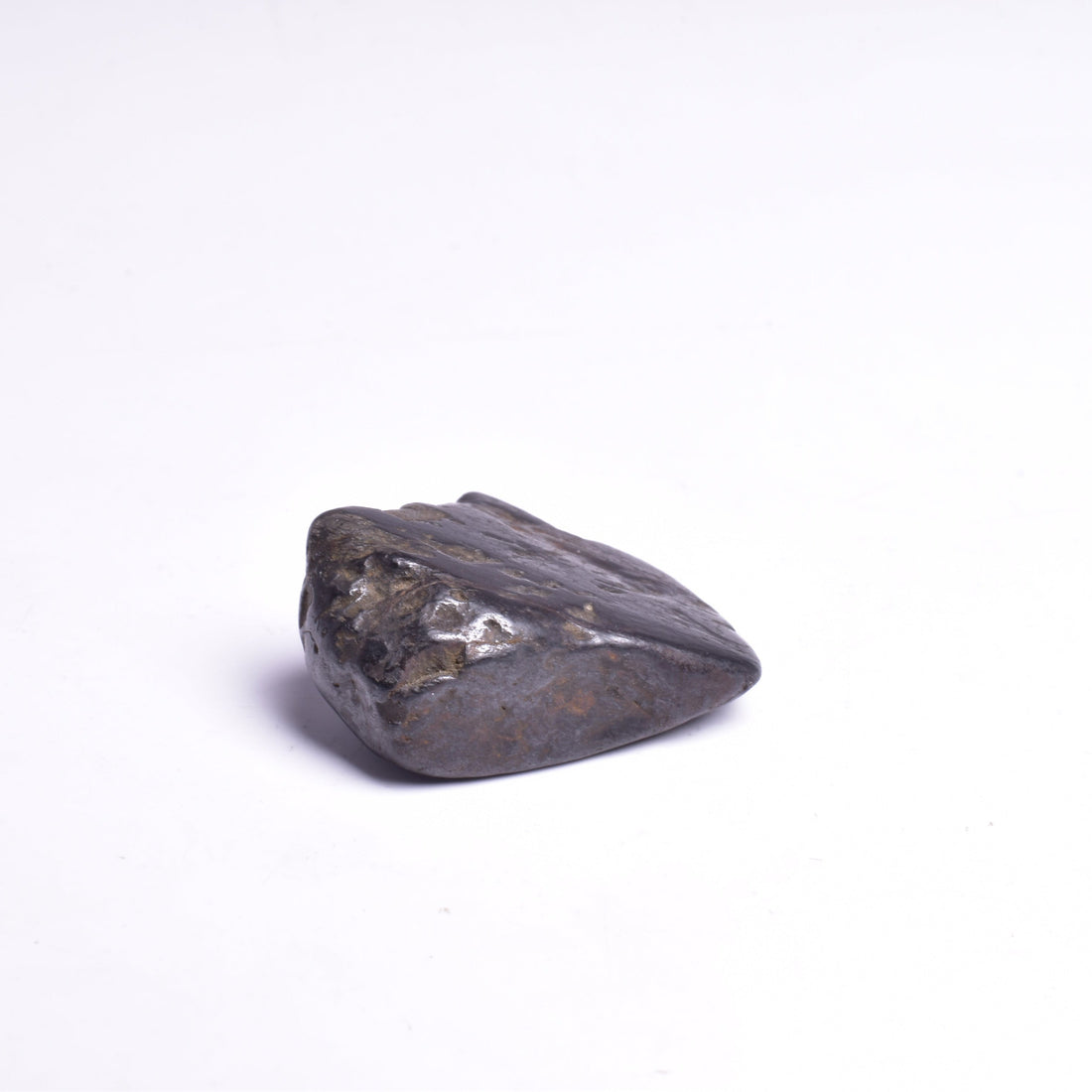
Nantan Meteorite: A Historical Nickel-Iron Fall from Guangxi
Share
The Nantan meteorite is a significant iron meteorite classified within the IAB-MG group, known for its coarse octahedrite structure and high nickel content. It is one of the few meteorites with a documented historical fall, reportedly witnessed in 1516 during the Ming Dynasty. Despite this early observation, the meteorite was not officially recovered until 1958, when large fragments were discovered near Nantan County in Guangxi Zhuang Autonomous Region, southern China.
Historical Context
Chinese records from the year 1516 describe a celestial event in which “stars fell from the sky,” consistent with the timing and location of the Nantan fall. Although no physical specimens were collected at the time, these accounts are considered credible by historians and planetary scientists. The meteorite remained buried and largely unknown until the mid-20th century, when it was rediscovered during a search for iron resources to support China’s industrial development. The fragments were initially mistaken for terrestrial iron ore before being identified as meteoritic in origin.
Geological and Structural Classification
Nantan belongs to the IAB complex, Main Group (MG), a classification of iron meteorites that are chemically and structurally diverse. These meteorites are thought to originate from a parent body that underwent incomplete differentiation, resulting in a mixture of metal and silicate inclusions. Nantan is specifically a coarse octahedrite, meaning it displays large Widmanstätten patterns—interlocking bands of kamacite and taenite—when etched with acid. These patterns form during extremely slow cooling within the core of an asteroid, at rates estimated to be less than 1°C per million years.
The meteorite is composed primarily of nickel-iron alloy, with an average nickel content of approximately 6.96%. Trace elements such as cobalt, phosphorus, and sulphur are also present, along with rare inclusions of graphite and schreibersite. These features are typical of IAB meteorites and provide clues about the thermal and impact history of their parent bodies.
Physical Characteristics
Fragments of the Nantan meteorite vary widely in size, ranging from small specimens weighing a few grams to massive pieces exceeding several hundred kilograms. The total known weight (TKW) of recovered material exceeds 9,500 kilograms, making it one of the largest iron meteorite finds in Asia. Many specimens exhibit surface oxidation due to centuries of exposure in a humid subtropical climate, resulting in rusting and the formation of iron oxides such as goethite and hematite.
Cut and polished specimens reveal the internal crystalline structure, with prominent Widmanstätten patterns that are prized by collectors and researchers alike. These patterns are not only aesthetically striking but also scientifically valuable, as they reflect the precise cooling history of the meteorite.
Scientific Significance
The Nantan meteorite has been extensively studied for its metallurgical and geochemical properties. Its classification within the IAB-MG group suggests a complex formation history involving partial melting, impact mixing, and incomplete core segregation. Unlike more homogeneous iron meteorites from differentiated bodies, IAB meteorites retain primitive features that offer insights into early solar system processes.
Studies of Nantan have contributed to our understanding of:
-
The thermal evolution of asteroid parent bodies
-
The role of impact events in shaping meteoritic textures
-
The distribution of trace elements in iron meteorites
-
The preservation of meteoritic material in humid environments
In addition to its scientific value, Nantan has cultural and historical significance. It is one of the few meteorites with a documented fall in ancient records, bridging the gap between historical astronomy and modern planetary science.
Collection and Distribution
Since its rediscovery in 1958, Nantan has been widely distributed among museums, universities, and private collectors. Specimens are commonly available on the commercial market, often in etched or polished form. Due to its abundance and striking appearance, Nantan is frequently used in educational displays and public outreach programs related to planetary science and meteoritics.
However, the widespread collection of Nantan material has raised concerns about the preservation of meteorite sites and the ethical sourcing of specimens. Responsible collection practice is essential to maintaining the scientific integrity of meteoritic research.
References
- Mindat.org – Nantan Meteorite https://www.mindat.org/loc-336.html
- Meteoritical Bulletin Database – Nantan https://www.lpi.usra.edu/meteor/metbull.php?code=16994
- Meteorite Market – Nantan Iron Meteorite https://www.meteoritemarket.com/Nantan.htm
- Encyclopedia of Meteorites – Nantan http://www.meteorite.fr/en/classification/nantan.htm